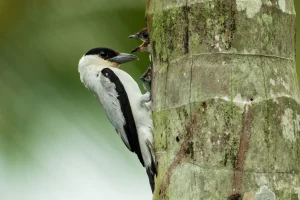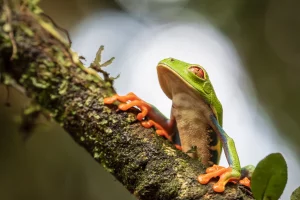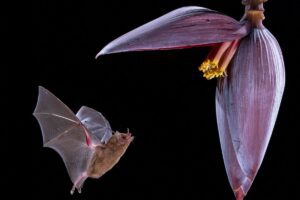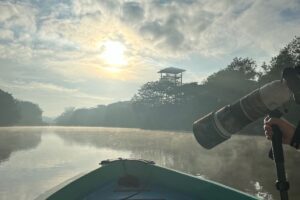Explore Cano Negro: Costa Rica’s Premier Wetland for Wildlife Photography
Caño Negro Wildlife Refuge is a Ramsar-listed wetland in northern Costa Rica, internationally recognized for its ecological importance and exceptional biodiversity. Seasonal lagoons, flooded forests, and the Frío River create a mosaic of habitats that attract thousands of birds and a rich community of reptiles and mammals. For photographers, Cano Negro photography tours in Costa Rica offer boat-based sessions, shoreline hides, and golden-hour opportunities that consistently deliver frame-worthy wildlife images.
Where It Is and What Makes It Unique
Located near the border with Nicaragua, Caño Negro centers around shallow lagoons and marshes that expand and contract with seasonal rains. In the dry season, water recedes and concentrates wildlife; in the green season, the wetlands swell, inviting dramatic skies and mirror-like reflections. Compared to rainforest-heavy destinations such as Boca Tapada and Maquenque, Caño Negro is defined by open-water compositions, bird flocks in flight, and low-angle perspectives from boats—ideal for storytelling sequences.
Biodiversity & Wildlife Highlights
- Wading birds: Jabiru (occasional), Wood Stork, Roseate Spoonbill, Great Blue, Cocoi, and Agami Heron (rare, secretive), plus egrets and ibis.
- Kingfishers: Amazon, Ringed, Belted, and Green—excellent subjects for action sequences and perch portraits.
- Raptors & flyovers: Snail Kite, Black-collared Hawk, Osprey (seasonal), and mixed heron flocks at dusk.
- Reptiles & mammals: Spectacled caiman, basilisks, iguanas, and howler/white-faced capuchin monkeys along the banks.
- Seasonal spectacles: As water levels drop, fish concentrate—driving dynamic hunting behavior in birds and creating high-action scenes.
Weather, Water Levels & the Best Time to Visit
Temperatures generally range from 24–33°C (75–91°F). The dry season (December–April) lowers water levels, concentrating wildlife and creating predictable conditions for boat-based photography. The green season (May–November) brings lush color, moody skies, and reflections—fantastic for minimalist compositions, dramatic cloudscapes, and post-rain activity.
Photography Opportunities & Field Strategy
- Boat sessions: Low angles from skiffs give intimate eye-level portraits of herons, kingfishers, and caimans. Early/late departures align with soft light and calm water.
- Shoreline walks: Scan mudflats and shallow edges for waders and hunting scenes, using reeds and driftwood as natural frames.
- Flight work: Track birds commuting at first/last light; anticipate flight paths near roosts and feeding coves.
- Behavior moments: Fish transfers, territorial chases, and kingfisher strikes are common—short bursts with good buffer settings help capture peak action.
- Landscape layers: Use long lenses for compressed layers of trees, mist, and distant flocks; switch to wide angles for mirror reflections and storm clouds.
Recommended Gear
- Telephoto: 400–600mm for birds and distant subjects; a 100–400mm or 200–600mm zoom offers versatility on boats.
- Second body: Paired with a 70–200mm (or 24–105mm) to catch sudden flyovers and environmental shots without changing lenses.
- Support: Beanbag or rail clamp for boat stability; monopod if you prefer support when standing.
- Protection: Dry bags, lens rain covers, microfiber cloths—condensation management is key.
- Filters: Circular polarizer can tame glare and improve reflections; ND for silky water only when the boat is steady on shore.
How Physis Photo Tours Designs Your Cano Negro Sessions
With Physis Photo Tours, your schedule is crafted around light, tides/water levels, and species behavior. Morning and late-afternoon boats are prioritized for soft light and calm water, while mid-day can be used for shore scouting or a second location on your multi-day circuit. Led by Andy Bezara, our private, custom-made experiences focus on technique, sequences, and portfolio diversity so every outing moves your work forward.
Build a Northern Wetlands Circuit
Many guests combine Caño Negro with Boca Tapada and Maquenque to balance wetland wildlife with rainforest birds, macro subjects, and nocturnal sessions. This mix delivers a powerful multi-day storyline—from open-water bird action to intimate hummingbird and frog portraits.
Practical Tips for the Field
- Shutter speed: 1/2000s+ for diving kingfishers; 1/800–1/1250s for portraits with some wing blur; Auto ISO with a ceiling you’re comfortable cleaning in post.
- Continuous AF: Use subject-tracking modes; pre-focus on perches you expect birds to hit.
- Ethics: Keep distance from roosts and nests; let behavior unfold without stress. Your guide will manage approach angles for minimal disturbance.
- Comfort on boats: Neutral clothing, hat, buff, sunscreen, and hydration. Keep gear minimal and organized in a waterproof tote.
Plan Your Cano Negro Photo Tour
Ready to capture Costa Rica’s iconic wetlands? Compose your custom photography tour and add Caño Negro to a multi-destination itinerary with Boca Tapada and Maquenque. For more destinations across the country, visit our Photography Destinations hub.
Internal and External Resources
Pair this wetland with rainforest-rich Boca Tapada and conservation-focused Maquenque for versatile wildlife coverage. To learn more about Caño Negro’s global significance as a wetland, see the Ramsar site profile.
Related Posts
Frequently Asked Questions
1. What’s the best season for Cano Negro photography?
The dry season (Dec–Apr) concentrates wildlife and simplifies access. The green season (May–Nov) adds lush color, reflections, and dramatic skies—excellent for moody compositions.
2. Are boat tours necessary for the best images?
They’re highly recommended. Low angles from boats produce intimate portraits and action sequences you can’t easily achieve from shore.
3. Can I combine Cano Negro with other destinations?
Yes. Many photographers pair it with Boca Tapada and Maquenque for a balanced wetlands–rainforest itinerary.
4. Do I need permits or special permissions?
Standard refuge entry procedures apply; your Physis Photo Tours itinerary includes logistics, boat arrangements, and guiding where needed.





